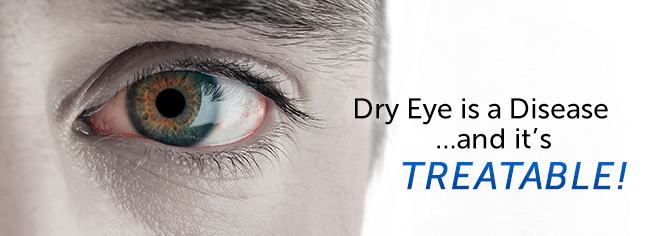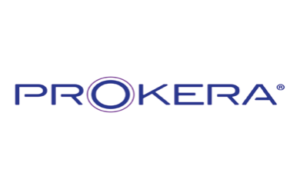Dry Eyes : A Treatment Center
 DRY EYES TREATMENT CENTER AT MAY EYE CARE
DRY EYES TREATMENT CENTER AT MAY EYE CARE
Click Here to learn more about our new Lipiflow treatment for Dry Eye. The newly-FDA procedure is brining relief to patients by treating the causes of Evaporative Dry Eye.
Click Here to watch videos on Dry Eye Syndrome
Dry eyes syndrome is one of the most common problems treated by eye physicians. Over ten million Americans suffer from dry eyes. It is usually caused by a problem with the quality of the tear film that lubricates the eyes.
What are tears?

Your tears are comprised of three layers.
1. The mucus layer – coats the cornea, the eye’s clear outer window, forming a foundation so the tear film can adhere to the eye.
2. The middle aqueous layer -provides moisture and supplies oxygen and other important nutrients to the cornea. This layer is made of 98 percent water along with small amounts of salt, proteins and other compounds. This part of your tear is produced in the lacrimal gland, located under the upper eyelid.
3. The outer lipid layer – an oily film that seals the tear film on the eye and helps to prevent evaporation. Several smaller glands in the lids make the oil and mucus layers.
With each blink, the eyelids spread the tears over the eye. Excess tears flow into two tiny drainage ducts in the corner of the eye by the nose. These ducts lead to tiny canals that connect to the nasal passage. The connection between the tear ducts and the nasal passage is the reason that crying causes a runny nose. In addition to lubricating the eye, tears are also produced as a reflex response to outside stimulus such as an injury or emotion. However, reflex tears do little to soothe a dry eye, which is why someone with watery eyes may still complain of irritation.
What causes Dry Eyes Syndrome?
Dry eye syndrome has many causes. One of the most common reasons for dryness is simply the normal aging process. As we grow older, our bodies produce less oil – 60% less at age 65 then at age 18. This is more pronounced in women, who tend to have drier skin then men. The oil deficiency also affects the tear film. Without as much oil to seal the watery layer, the tear film evaporates much faster, leaving dry areas on the cornea.
Many other factors, such as hot, dry or windy climates, high altitudes, air-conditioning and cigarette smoke also cause dry eyes. Many people also find their eyes become irritated when reading or working on a computer. Stopping periodically to rest and blink keeps the eyes more comfortable.
Contact lens wearers may also suffer from dryness because the contacts absorb the tear film, causing proteins to form on the surface of the lens. Certain medications, thyroid conditions, vitamin A deficiency, and diseases such as Parkinson’s and Sjogren’s can also cause dryness. Women frequently experience problems with dry eyes as they enter menopause because of hormonal changes.
What are the symptoms of Dry Eye Syndrome?
- Itching
- Burning
- Irritation
- Redness
- Blurred vision that improves with blinking
- Excessive tearing
- Increased discomfort after periods of reading, watching TV, or working on a computer
Detection and Diagnosis
There are several methods to test for dry eyes. The doctor will first determine the underlying cause by measuring the production, evaporation rate and quality of the tear film. Special drops that highlight problems that would be otherwise invisible are particularly helpful to diagnose the presence and extent of the dryness.
Treatment Options
 May Eye Care is pleased to offer our patients PROKERA®, a new treatment for chronic Dry Eye that heals the surface of your eye (cornea) and returns your eye to a normal, healthy state. PROKERA is a simple procedure and is easily inserted and removed in our office. Once removed your cornea is rejuvenated so you can see and feel better. In a recent patient survey, 93% of patients with Dry Eye said they felt better after treatment with PROKERA.
May Eye Care is pleased to offer our patients PROKERA®, a new treatment for chronic Dry Eye that heals the surface of your eye (cornea) and returns your eye to a normal, healthy state. PROKERA is a simple procedure and is easily inserted and removed in our office. Once removed your cornea is rejuvenated so you can see and feel better. In a recent patient survey, 93% of patients with Dry Eye said they felt better after treatment with PROKERA.
PROKERA is similar to a contact lens and is made of amniotic tissue, which is known for its natural therapeutic actions and heals your eye faster with less pain, scarring, and inflammation. The amniotic tissue used in PROKERA is provided by a tissue bank regulated by the FDA and has passed numerous quality control tests making it safe and effective. Clinical studies have shown PROKERA reduces the sign and symptoms of Dry Eye, and helps soothe pain, heal the eye, and improve vision.
PROKERA is the only U.S. Food and Drug Administration (FDA)-cleared therapeutic device that reduces inflammation and promotes healing. For more information visit www.prokerainfo.com.
Other Treatment Options
Recommended treatments will depend on the proper diagnosis of the type of dry eye causing the discomfort. Since everyone’s needs are a little different, a dry eye specialist, will customize treatments to your specific needs.
Many find relief simply from using artificial tears on a regular basis. Some of these products are watery and alleviate the symptoms temporarily; others are thicker and adhere to the eye longer. Avoid products that whiten the eyes – they don’t have adequate lubricating qualities and often make the problem worse.
Closing the opening of the tear drain in the eyelid with special inserts called punctal plugs is another option. This works like closing a sink drain with a stopper. These special plugs trap the tears on the eye, keeping it moist. This may be done on a temporary basis with a dissolvable collagen plug, or permanently with a silicone plug.
There are also simple lifestyle changes that can significantly improve irritation from dry eyes. For example, drinking eight to ten glasses of water each day keeps the body hydrated and flushes impurities. Make a conscious effort to blink frequently – especially when reading or watching television. Avoid rubbing the eyes. This only worsens the irritation.
Treating dry eye problems is important not only for comfort, but also for the health of the cornea.
